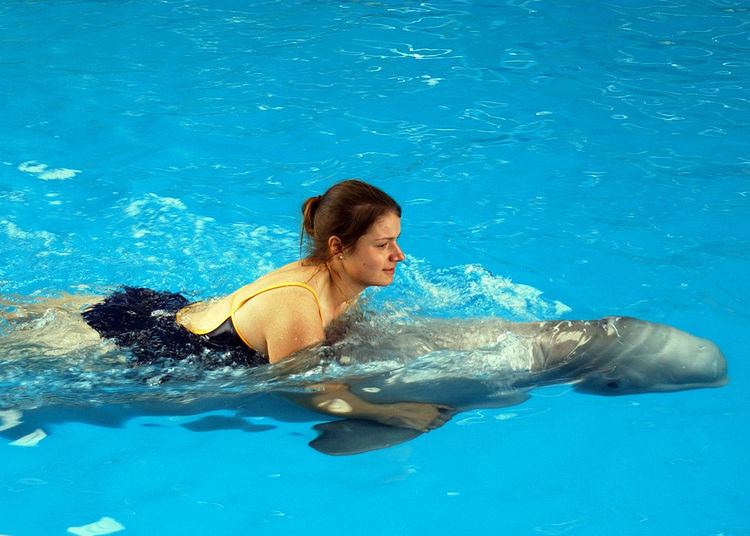 | ||
The popularity of swimming with dolphins and other interactions with dolphins greatly increased in the 1980s and 1990s due to the satisfaction and learning that human beings experience while swimming with dolphins. This activity may help to treat depression in humans.
Contents
There has been a proliferation of dolphinariums around the world despite the controversy around this activity, which has yet to be circumscribed by the law. The renewed popularity of dolphins in the 1960s resulted in the appearance of many dolphinariums around the world, which have made dolphins accessible to the public. Though criticism and more strict animal welfare laws have forced many dolphinariums to close their doors, hundreds still exist around the world attracting a large amount of visitors. The risks associated with interaction with dolphins include injury for humans and injury, stress and death for dolphins.
Scenarios
There are three types of environments where people can swim with dolphins: ponds, natural demarcated areas and at the sea. The ponds are very large and deep pools, such as the SeaWorld aquarium. The natural demarcated areas are places adjacent to the sea that share the sea's pure water and seabed, Riviera Maya, and Cozumel in Mexico. Some (though certainly not all) sea swim programs are done at certain points where wild dolphins are accustomed to getting food. Some researchers are against feeding wild dolphins because of the risks of changing their eating habits. This practice costs somewhere in the range of $100 to $400+.
Programs
Swimming with dolphins is an activity offered by many dolphinariums around the world, and there is a large and varied array of interactive programs and activities. Each dolphinarium usually has their specific supply and particular way to present their activities. Most programs include direct contact with dolphins; in some places it is allowed to take the dolphin fin and be dragged by the animal. Other dolphinariums do not allow this because it could be harmful to the animal. In recent years a program that allows customers to have the experience of being coaches has become popular. Some programs offer guests additional interaction by allowing them to act as trainers for the day. Most programs offer pictures and video memories of the experience.
Countries with swimming with dolphin programs include Mexico, United States, Australia, Ireland, New Zealand and Israel as well as most caribbean nations like Bahamas, Cuba & Dominican Republic.
Most dolphinariums charge between $75 to up to $200 per person per session.
